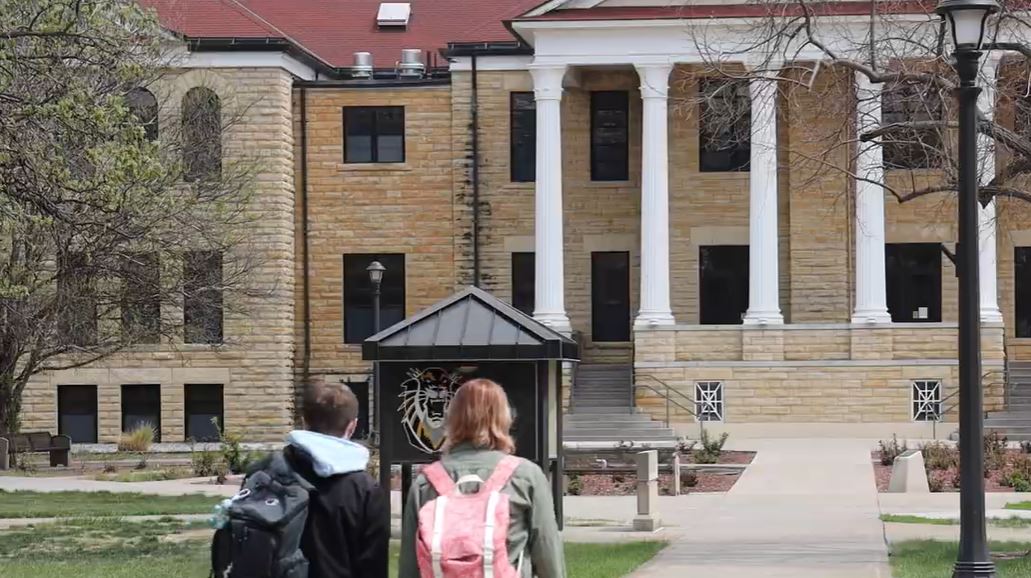By RAEGAN NEUFELD
Tiger Media Network
Different questions and varying degrees of confusion surround academic advising for students at Fort Hays State University. Two of the answers, it seems, are communication and time.
Such questions and confusion were brought up at a Student Government Association meeting last month, where senators discussed the differences in their experiences. Some have had positive experiences, while others have had negative. Some senators are advised by professional advisors while others are still advised by a faculty member.
This difference was addressed by University Provost Jill Arensdorf at another SGA meeting four weeks later. According to Arensdorf, the transition from faculty member advisors to “college-centric centralized advisors” began in the spring of 2021.
However, each academic program decided on how to move forward with the transition. They could keep students with their current faculty member advisor and move to professional advisors with incoming students in the fall of 2021, or they could switch all students to professional advisors.
At the SGA meeting, Arensdorf said the decision was made because of the benefits for students.
“There is a tremendous amount of research that indicates once the model is in place and is working, services are better for students, students are retained and graduate quicker because the people that are helping them are experts at advising,” she said.
Conversely, professional advisors have advised FHSU Online students for at least 10 years.
Arensdorf noted that the change is not a negative reflection on the advising abilities of faculty members.
Patricia Griffin, director of the Academic Advising and Career Exploration Center, also clarified during an interview with Tiger Media Network that the change was not due to issues with faculty member advising.
“It’s not because everybody was a bad advisor, but the idea was to provide a different kind of support for students,” Griffin said.
Arensdorf also acknowledged there is room for improvement when it comes to academic advising.
“It is not perfect,” Arensdorf said at last week’s SGA meeting. “I’m not going to stand up here and say we don’t have a thing we need to work on. I’m really anxious to hear from you this evening. I understand there are definitely things we need to work on.”
Logan Erichsen, a student and senator majoring in geology, described his experience with academic advising as less than ideal.
“I think there’s a disconnect that negatively affects some things,” he said.
Erichsen was moved to a professional advisor in the second semester of his first year. One point of contention for him is the apparent lack of communication between his department and his advisor. Faculty told Erichsen of recent changes to courses in his area of study, but his advisor was not aware of those changes when he enrolled for the next semester.
“I don’t think that’s his [advisor’s] fault,” Erichsen said. “I think that’s the department not telling him what’s happening, which they should. That’s where I come to the point that I think it would be easier for somebody in the department to do it, like my faculty mentor, because he already knows, he’s the one teaching that class.”
According to Griffin, it is a department’s job to communicate changes with an advisor. This communication is done through the college’s dean or the chair of each department.
Whatever changes are communicated, however, have to be made official on Workday for advisors.
“Advisors operate off of what is assigned based on the date (proposed changes) are officially approved, which is what’s in Workday at this point,” Griffin said.
Communication is key not only between advisors and departments but also for students and advisors.
Alyssa Mikkelson, a communication studies major, also has a professional advisor and described her experience as overwhelmingly positive.
“I’ve always loved the way that she set it up and the way that I’ve gotten to choose my classes,” Mikkelson said. “I always get an input in my classes, but she’s making sure that she’s setting me up to graduate as soon as possible.”
Reaching out to her advisor and establishing a rapport has been important for Mikkelson, something she thinks those with negative experiences could benefit from.
“I always email mine if I have a question,” she said. “I think it’s kind of like a two-sided thing. (Some people are) like, ‘they don’t contact me.’ Well, you’re not really contacting them first either, so it’s kind of a two-way street.”
Students currently have the opportunity to give feedback on their advisor via a survey that is emailed to students at the same time as course evaluations. They can go to their dean with any feedback throughout the rest of the year as well.
Griffin also mentioned a conversation with a consulting group from NACADA: The Global Community for Academic Advising. The group will be on campus at the end of January and students are invited to provide input.
Another piece to advising is the addition of faculty mentors, a program that began implementation this semester. Faculty mentors will be people who students can go to for internship and career advice, letters of recommendation and connections. Once a program has faculty members in place, they will be listed in a student’s Workday like their academic advisor.
“With that decision, it wasn’t that we were saying faculty aren’t going to be engaged with students,” Griffin said of the move to professional advisors. “That’s where the faculty mentor piece came in.”
Arensdorf said at the SGA meeting that adding faculty mentors will help provide a more ideal advising model, but there is still work to be done.
“Each of your areas of study or programs are deploying faculty mentors just a little different,” she said. “For right now, I’m okay with that. Eventually, I hope we can streamline it a little bit more, but we had to kick it off and we had to start somewhere. If we waited until it was perfect, we would never kick it off.”

